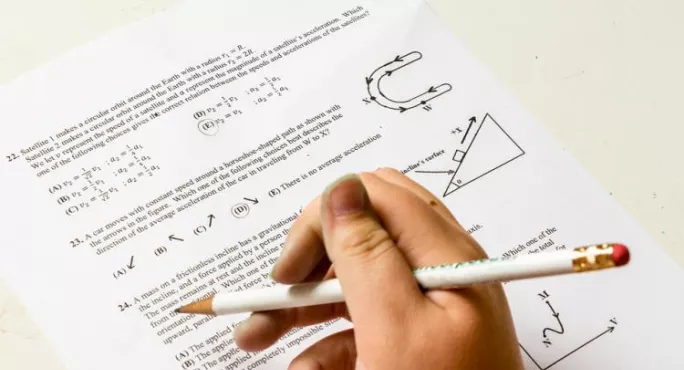- Home
- GCSE results 2017: Exam boards defend maths paper where 18 per cent equals a pass
GCSE results 2017: Exam boards defend maths paper where 18 per cent equals a pass

A “pass” or a grade 4 in GCSE maths this year would have been achieved with 18 per cent of the overall marks in the higher tier paper, exams regulator Ofqual has said.
Last year, it is understood that a pass or a grade C in the higher mathematics paper would have been achieved with approximately 35 per cent of the overall marks.
This morning one teacher took to the Tes forums to describe this year’s pass mark as “bloody pathetic!” “Maybe we should forget grading of any sort and just give the results as a percentage,” they said.
But exam boards have defended the lower grade boundaries set for a pass in the new maths GCSE.
On the higher tier paper, 4 is the lowest grade possible, with half of the marks in the exam targeted at grades 4-6 and the other half at grades 7-9.
At a press briefing this morning, exam boards said that the grade boundaries only appeared lower because of the changes to the higher and foundation papers this year.
Sharon Hague, senior vice president of Pearson, which runs Edexcel GCSEs, said that straightforward comparisons with last year were “not accurate” because of the design of the new qualification.
She said: “There are actually some differences in the way the new mathematics qualification is aligned versus the old mathematics qualification which helps to explain why we are seeing that change.
“Mathematics is tiered. There are two exams. One which is aimed at the lower end of the achievement range with the top grade as 5.
“And the second paper - the higher tier - is aimed at the very top end. And the lowest grade that you can achieve for that paper is a grade 4. So you have got a lot of very demanding content in that higher tier paper.”
Mark Bedlow, chief delivery officer of the OCR examination board, added that depite worries about grade boundaries there had been “consistent standards”.
He added that the percentage of 16-year-olds in the UK getting a grade A and above (or 7 and above) in maths had stayed the same as last year - at 19.7 per cent.
- GCSE Results Day 2017: All you need to know
- How does Progress 8 work?
- Follow GCSE Results Day 2017 Live with our blog
Ofqual figures show that students sitting the higher tier maths GCSE needed to score at least 18 per cent on average to secure a grade 4, while 52 per cent was the boundary for a 7 on average, and 79 per cent was the average required for a grade 9.
The exams regulator also confirmed today that a grade 4 in the foundation mathematics paper would have been achieved with 51 per cent of the overall marks.
Earlier this year, it was revealed that the majority of schools intended to enter a greater proportion of students into the foundation tier paper for maths GCSE this summer.
Figures released today confirm that the proportion sitting the higher paper in maths has fallen from 76 per cent last year to 53 per cent.
Meanwhile, the percentage taking the foundation paper in maths has increased from 24 per cent last year to 47 per cent this year.
Professor Alan Smithers, director of the Centre for Education and Employment Research at Buckingham University, said grade boundaries had been dropped this year to ensure that sufficient students achieved key results.
“What has happened this year is the regulator has penned the new grade 7 to an A grade and the new grade 4 to a C grade,” he said.
“In order to maintain that, it’s dropped the number of marks required for a pass at various levels. In some cases, it’s dropped them very low, it’s more or less giving away the grade.
“Ofqual maintains this is necessary to maintain standards across the years, but in fact it is taking away some of the point of the exams, which is to enable users of the results to tell people apart with greater accuracy.”
Exams regulator Ofqual has had processes in place for some years to ensure that results are comparable each year, which are also intended to ensure that students taking the first new courses this summer are not disadvantaged.
An Ofqual spokesperson said: “The higher tier paper caters for students who might be looking to achieve a grade 4 right up to a grade 9. It starts with grade 4 level questions.
“In contrast, the foundation tier paper caters for students seeking to achieve a grade 1 through to grade 5. The different grade boundaries on the two papers reflect that.
“These boundaries were set using a combination of statistics and examiner judgment. We are confident that they reflect an appropriate standard of performance.”
For all the latest news and views on GCSE results day, please visit our specialist GCSE results hub.
Want to keep up with the latest education news and opinion? Follow Tes on Twitter and like Tes on Facebook
Keep reading for just £1 per month
You've reached your limit of free articles this month. Subscribe for £1 per month for three months and get:
- Unlimited access to all Tes magazine content
- Exclusive subscriber-only stories
- Award-winning email newsletters



